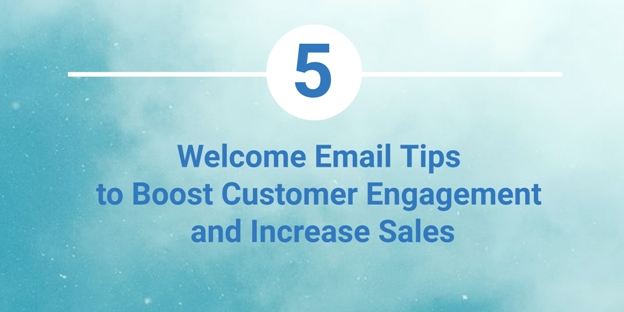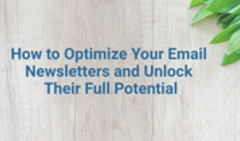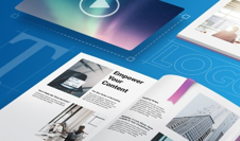Being able to generate leads and attract customers is great, but what do you do once you have that customer data? You don’t wait for them to make the next move, you send them a welcome email of course! This email needs to build the foundation for your relationship with the customer. That’s a lot of pressure, so you’d better make it good.
A strong welcome email should be a key part of your outreach strategy. Welcome emails have an average open rate of 50%, making them 86% more effective than a standard newsletter. If you have a weak welcome email, then you’re throwing away the opportunity to maximize this boosted engagement.
What is a Welcome Email?
Okay, you know what a welcome email is. But did you know there are several different types of welcome emails? After analyzing 50 different welcome emails, customer.io found that they all fell into one of four categories.
The casual checkup
Often favored by small startups and lean operations, these are usually written in plain text to feel more personal. They will tend to be signed off by the company’s founder or CEO, and if customers reply to them they will normally get through to a real person. These emails stand out in an inbox full of marketing spam and are great for offering a personal touch.
The quick conversion
These emails are designed to get your customer to perform an action of some sort. They might encourage the customer to connect with people they already know on your platform. Or maybe the email will provide a link to download your app. Whatever the goal, these emails will be focused around a call to action.
The value sell
Value sell emails are about playing the long game. They plant a seed for a conversion or upsell further down the line. They will often show the customer how to get more out of the product and can help to remove any onboarding friction. These emails are about building a trusting, loyal customer who values your company as well as your products.
The close
These emails are all about the conversions. They will often be used when a customer has signed up for a free trial. A trial will tend to only last a few days, so it makes sense for the welcome email to be focusing on closing the sale. Closing emails are often used as a last resort in email campaigns. By using them as a welcome email instead, you increase the chances of getting that sale early on.
How Do You Make the Most of a Welcome Email?
First impressions count, so it’s important to get your welcome email right. If done properly, a welcome email will keep traffic flowing back to your website. Read on for our five welcome email tips that will help you boost customer engagement and make sales from the get-go.
Tip 1: Show your personality
It’s important to inject some personality into your welcome emails. No one wants to sit and read some boring memo or a message that’s clearly auto-generated by some order management software. Keep it conversational and make the customer feel like you personally care about doing business with them.
Depending on the nature of your business, the type of personality you display will be different. Take a moment to consider how you want your business to come across. Are you cool and professional? Giddy and fun? Geeky and knowledgeable? Choose wording and imagery that reflect the right personality for your company.
Take a look at the below email from Howler Brothers. The colors and imagery give you an immediate feel for their personality.

Image source: reallygoodemails.com
Tip 2: Make your emails engaging
Plain text emails have their uses, but to boost engagement you need to add some flair to your messages. A recent survey found that 82% of people are more likely to respond to an email that has an interactive element.
For example, if you’re selling Warehouse Management Software, you could send out a WMS implementation checklist with interactive checkboxes. By ending the checklist with a call to action, you can then take advantage of this engagement by driving traffic back to your site.
Another way to make your emails more engaging is by adding GIFs and videos. The same survey found that 65% of people preferred video over text, and 69% of people preferred GIFs over static images. By adding some animation and movement to your email, you can boost engagement with very little effort. Many stock photo sites include GIFs, or you can even make your own using Photoshop.
Using GIFs is a great way to make your call to action buttons stand out. Try an animated call to action button that allows your customers to submit feedback. This will not only boost engagement but will also show your customers that you’re listening to them. Aim to find a unique and engaging way of doing this. For example, instead of a generic comment box, you could set up a VoIP line where customers can leave a visual voicemail with their feedback.
If you haven’t heard of VoIP before, it’s a more convenient method of communication that allows its users to place calls through the Internet as opposed to general phone practices. It’s cheap, easy and more accessible thanks to the digital age. Therefore, think of unique ways to integrate tech and other aspects into your solutions. VoIP system is just one such example! However, VoIP isn’t the only solution—other alternatives, such as AI-powered chatbots, cloud-based messaging services, or even hybrid communication tools, can help streamline customer interactions while keeping engagement high.
This email from Niice uses an embedded video to boost engagement.

Image source: reallygoodemails.com
Tip 3: Personalize your emails
Adding some personalization to your emails is pretty easy and goes a long way. Your email software will almost certainly have a way to insert the customer’s name into the email copy. This is a simple way to catch the customer’s eye and make the email feel more personal. The below email from Help For Heroes uses the customer’s name twice, making the email feel tailored specifically for Smiles Davies.
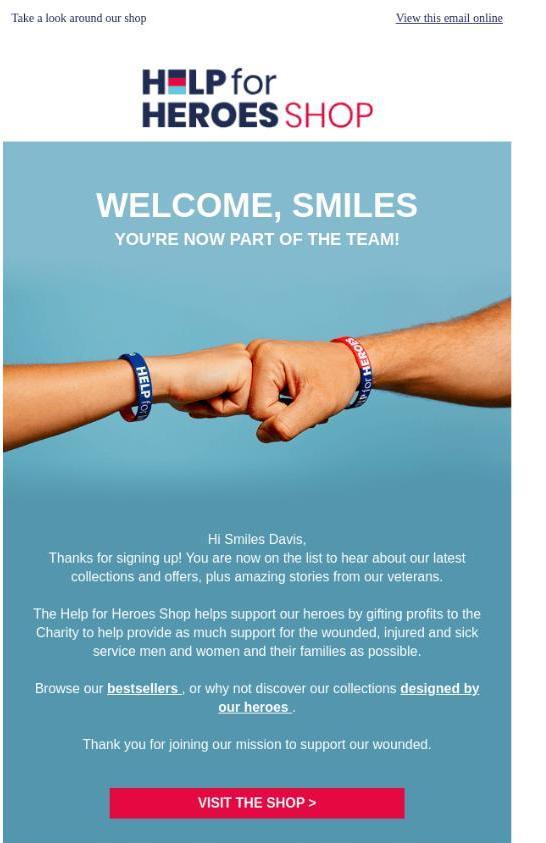
Image source: reallygoodemails.com
You can also use the information you already have about the customer to suggest relevant products or services. By integrating your website data into your email campaign, you can create the experience consumers expect with better item data. Did the customer originally come to your store to buy a t-shirt? Show them similar t-shirts, and suggest a nice pair of shorts to match the shirt they already bought.
Tip 4: Include a discount code
Everyone loves getting something for nothing. Consider adding some sort of a discount code or a freebie to your welcome email. This will increase the chances of your customer returning to your site. This can also be a way to manage your inventory. With the right retailer inventory management software, you should have a clear view of your stock levels. Got a product that isn’t selling? Offer a discount code for that product to help clear the inventory.
If you don’t want to discount your products, you can instead include a discount code for shipping and handling. The variation in shipping tax by state means that some of your customers will have to pay a heavy shipping charge. You can reel these customers in by offering free or discounted shipping on their first order.
Another great way to boost engagement is to set up a loyalty program. This way, you can reward regular customers for their loyalty without offering discounts to everyone who signs up to your mailing list. And if you include a QR code in your welcome email, your customers will be able to add your loyalty card directly to their mobile wallet. This will be a great way to remind them to shop with you.
This email from Riley offers a discount code encouraging the customer to make their first purchase.

Image source: reallygoodemails.com
Tip 5: Tell a story
A great way to make your welcome email more engaging is by telling a story. Let customers get to know you and your company a little better. You could tell them about how the company was started. Give them some insight into why you chose the name of the business. Let them know what your favorite product is and why. This will transform you from a faceless entity into a personable company that your customer is excited to do business with.
If you feel that writing a story about your own company is too egotistical, or you don’t know what to write, tell a customer story instead! Use testimonials and case studies to show how your products have enriched and enhanced people’s lives. These testimonials will not only tell a story, but they will also increase trust in your brand.
Remember to keep these stories short. This is just a welcome email, after all, you’re not writing your memoir. Check out the below email from Bite. They tell a story about their company ethos and environmentalism, and they manage to tell it in just three sentences!
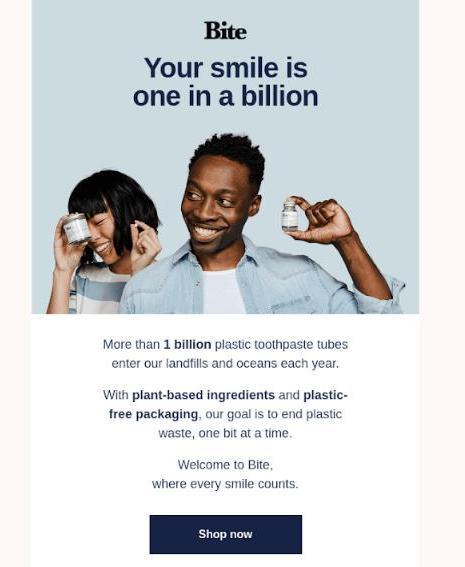
Image source: reallygoodemails.com
Strong welcome emails are an essential part of managing a successful business. They can make or break your relationship with a customer and will shape how people do business with you. Building strong relationships with your customers can transform simple shoppers into loyal brand ambassadors. Following the above tips will help you create a powerful and effective welcome email. That stellar first impression will enable you to boost customer engagement and make sales from the get-go.
Author's bio:
Nick Shaw is the Chief Revenue Officer (CRO) of Brightpearl, a leading provider of inventory, warehouse and omnichannel retail software. He is responsible for Global Marketing, Sales and Alliances for the leading retail inventory management software provider. Nick has written for sites such as 3dcart and Pandadoc. Here is Nick Shaw’s LinkedIn.
